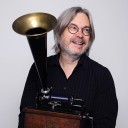What approaches, methods and techniques can we use in performing and disseminating historical re-enactments and hands-on experiments? What best practices and “artful failures” can we distinguish? How can we learn from other disciplines in performing and disseminating historical re-enactments and hands-on experiments? In what ways does the performance of historical experiments produce new forms of (tacit) knowledge? What are the performative qualities of experimental historiography? And how can artistic practices that employ experimental historical research further the study of media archaeology? By reflecting on these questions and sharing experiences on historical re-enactments in various fields and domains – including media history, art history, musicology, history of science, sensorial ethnography, contemporary composition and sound art – the workshop aimed to contribute to the development of a best practice guide and protocol that we can use for performing and disseminating media archaeological experiments in the DEMA research project.
Last year, we reflected on the question ‘How to document media archaeological experiments?’. For this second workshop, which took place online due to the current Covid-19 pandemic, our aim was to discuss and share experiences on how to perform media archaeological experiments and historical re-enactments, both in historical and artistic enquiries. Due to the ongoing Covid-19 pandemic, one of the challenges we faced in organizing the workshop was how to present the various historical re-enactments and media archaeological performances of the workshop participants. To foster our panel discussions, we decided to ask each of the participants to prepare a short video, which highlights some of their performative work done in current or previous research projects. These videos were produced and shared among the participants in advance of the workshop. They were watched collectively during the workshop as a way to inform our panel discussions. Most of these videos are embedded in this report as well.
In addition to the project team members, participants of this second DEMA workshop included (in order of appearance): John Ellis (Royal Holloway, University of London), Ludwig Vogl-Bienek (Philips Universität Marburg), Karin Bienek (illuminago), Sean Williams (Open University), Paolo Brenni (Fondazione Scienza e Tecnica of Florence), Roland Wittje (Indian Institute of Technology, Madras), Anna Giatti (Fondazione Scienza e Tecnica of Florence), Stefan Höltgen (Humboldt-Universität zu Berlin), Shintaro Miyazaki (Humboldt-Universität zu Berlin), Martin Loiperdinger (University of Trier), Maartje Stols-Witlox (University of Amsterdam), Anna Harris (Maastricht University), Roger Kneebone (Imperial College London), Lori Emerson (Media Archaeology Lab, University of Colorado Boulder), libi rose striegl (Media Archaeology Lab, University of Colorado Boulder), Paul De Marinis (Stanford University) and Erkki Huhtamo (UCLA).
A full report of the workshop on performing media archaeological experiments, can be read at the DEMA website here: https://dema.uni.lu/performing-media-archaeological-experiments-report/.
Panel I: Performative experiments in the DEMA project
After a short welcome and introduction to the DEMA project by Andreas Fickers - the PI of the project - and Stefan Krebs - the project coordinator - the first panel included presentations by DEMA project researchers Aleksander Kolkowski and Tim van der Heijden as well as associated project partners Ludwig Vogl-Bienek and Karin Bienek.
Signal to noise
In his video presentation entitled “Signal to noise”, Aleksander Kolkowski made a homage to Alvin Lucier’s seminal electro-acoustic composition “I am Sitting in a Room” (1969). Using a hybrid tape and disc recorder, a Wilcox-Gay Recordio from ca 1951, Kolkowski recorded speech onto magnetic tape, which was transferred to a lacquer disc and back again to tape; all on the same machine. Just like Lucier’s electro-acoustic composition, where a narrator’s voice is recorded, played back into the room and re-recorded repeatedly until the natural acoustic resonances of the room are so reinforced that they overwhelm the speech, Kolkowski’s experiment exemplified how in the repeated cycle of disc and tape recording the voice signal slowly transforms into noise as well. Throughout the process, his recorded voice becomes subsumed and buried under layer upon layer of tape hiss and disc-cutting and surface noises. Besides a creative reuse of the hybrid tape and disc recorder, the demonstration was also meant as a media-archaeological exploration into the usage and functions of this historical audio technology, highlighting its hybridity and the noises inherent to the tape and disc media technologies.
Re-enacting a 16mm home movie
In his presentation entitled “Performing a historical re-enactment: the making of a 16mm home movie”, Tim van der Heijden reflected on the making of a home movie with an original Ciné-Kodak 16mm film camera from ca. 1930. By means of a split screen montage, he showed the making off process as well as the results of one of his analogue film experiments. The video that accompanied his presentation highlighted historical re-enactments of Lumiere’s Le Repas de Bébé (1895) and Dutch amateur filmmaker Piet Schendstok’s Jetty’s First Steps (1941). Furthermore, Van der Heijden’s presentation discussed the performative nature of media archaeological experiments in general. Asking the central question ‘what makes an experiment performative?’, he argued that in the case of the making of a home movie, the performative aspect is not merely limited to the screening practice but rather involves all phases of the production process. At the end of his presentation, he presented a possible typology of performative experiments, meant to serve as heuristic tool for the workshop discussions: (1) entertaining performative experiments, in which the experiment forms an “attraction”; (2) pedagogical performative experiments, in which the experiment serves as a lecture; (3) archival performative experiments, in which the experiment is a demonstration of tacit knowledge; and (4) reflexive performative experiments, in which the experiment and the way in which it is presented reflects on the experiment itself.
Media-archaeological experiments with ‘Improved Phantasmagoria Lanterns'
In their presentation “Media-archaeological experiments with ‘Improved Phantasmagoria Lanterns' (1820-1880), Ludwig Vogl-Bienek and Karin Bienek, associated partners in the DEMA project, presented an overview of a series media archaeological experiments with “improved phantasmagoria lanterns”. As a project device, the phantasmagoria lantern was used from the 1820s to the 1870s to convey knowledge in an entertaining way. The experiments were conducted with surviving devices and associated glass slides (copperplate sliders). A screen for rear projection was used as a projection surface, which was reconstructed according to the original instructions from 1823. The presentation was nicely illustrated with photographs and video sequences that were recorded to document their media archaeological experiments.
The discussion of this first panel of the workshop addressed both epistemological and methodological concerns. In the case of Ludwig Vogl-Bienek and Karin Bienek’s presentation, the question was asked if the effect of the light source being visible on the projection screen in the documentation footage corresponds to the historical reception of phantasmagoria lantern images. Methodologically, it raised the question whether this perceptual effect was constructed or emphasized by the documentation means or actually visible within the experimental space itself. In the case of Tim van der Heijden’s presentation, the use of the “fresh” Fomapan black-and-white reversal film in his original 16mm film camera raised questions about the historical authenticity of the media archaeological experiments, both in terms of their process and (aesthetic) results. How is the experience of using historical media technologies similar or different compared to historical user practices? In relation to Aleksander Kolkowski’s use of his hybrid tape and disc recorder as a historical audio technology, the importance of developing (tacit) knowledge and (re)gaining technical skills was emphasized. The panel concluded with the observation that this is perhaps the main heuristic value of doing media-archaeological experiments: to become a “reflexive user” through hands-on experience. Whether this applies to dealing with oil lamps in the case of phantasmagoria lanterns, the use of acetate-cellulose in the case of a 16mm home movie, or the materiality of tape and disc as historical sound recording technologies.
The DEMA team would like to thank all workshop participants for their contributions.






